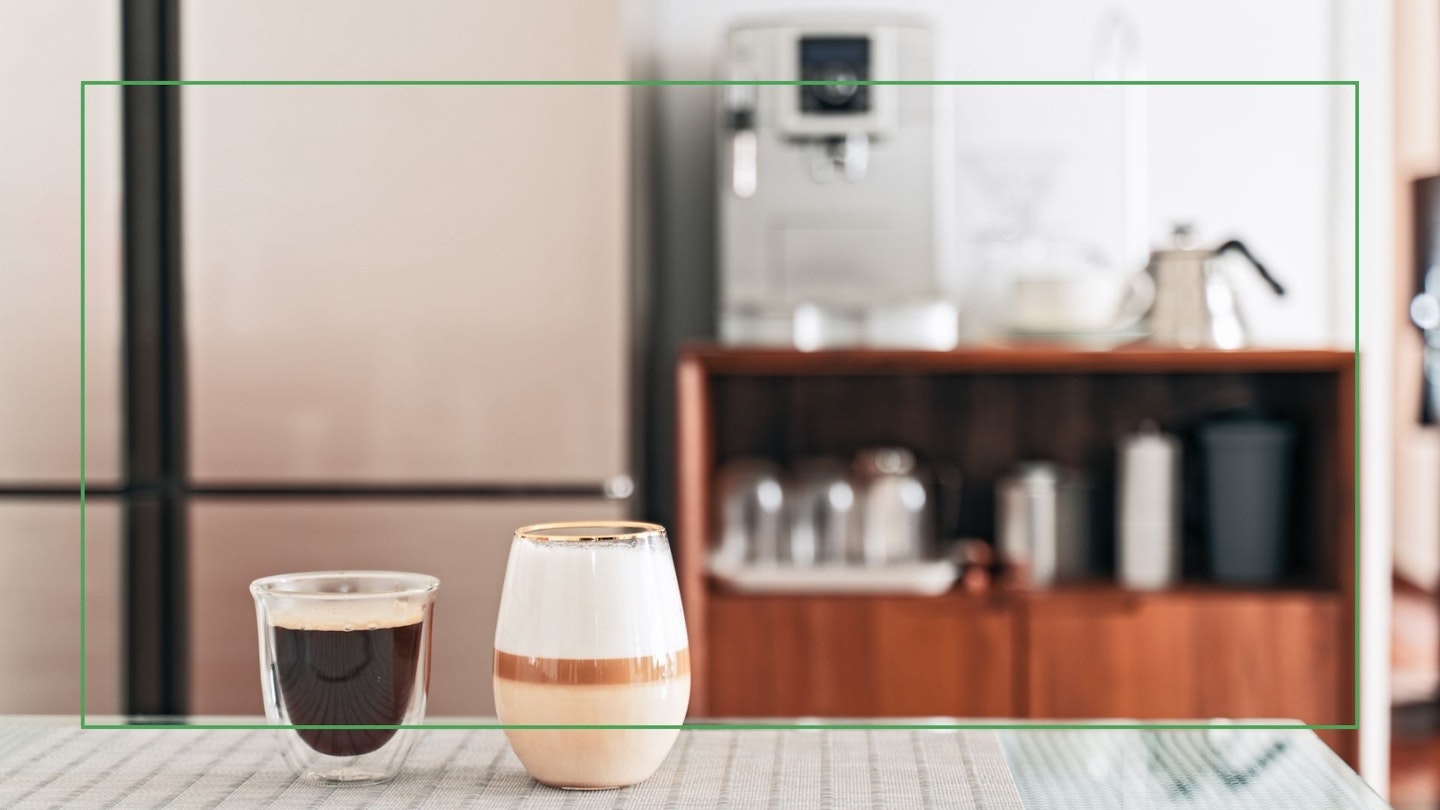Coffee means something different to everyone. You can be a straight-up black coffee drinker, an espresso fan, prefer to sample coffee blend flavours from around the world or are partial to a frothy latte every now and again, no matter what, there’s a coffee machine that will suit your needs.
When it comes to how to choose the best coffee machine you need to consider factors such as budget and how much you want to spend because prices can range from £30 right up to £2,000. How involved do you want to be in the actual coffee-making process? You can brew a pot with ground coffee using a filter coffee machine, or slot in a coffee pod or a bean to cup will automate the whole process, it’s just the maintenance that is time-consuming. Perhaps most importantly if you’re a coffee aficionado then the style of coffee you like to drink will play a big part in your decision.
What features to look for when deciding how to choose a coffee machine
As we mentioned above, you’ll need to decide what type of coffee machine will suit your lifestyle needs before considering the features you need to look for when purchasing a coffee machine.
Milk frother
If you like milk-based coffee drinks, then a coffee machine with a milk frother will be a priority. Milk frothers come in different varieties, for example with a bean-to-cup coffee machine it’s highly likely there will be a fixed steam wand attached to your machine that uses steam pressure to froth your milk. For a coffee pod machine, a standalone automatic milk frother will either come as part of your product package or can be purchased separately. They whip up froth or heat milk in a contained jug that you then pour on your drink. And finally, you can opt for a handheld electric milk frothing whisk that you pop in your milk to create foam, but it does not heat the milk.
Capacity
Think about how much coffee you consume, this will help you when it comes to choosing the capacity of your machine. Capacity mainly refers to the tank your coffee machine has that needs to be filled, if you drink a lot of coffee, you’ll want a tank that holds more than 1.5L on your filter or bean-to-cup machine, so you don’t have to fill it so often. But if you’re a casual coffee drinker, a pod machine that brews one cup at a time will be suitable. You can even consider a coffee subscription service to make your life easier.
Maintenance
Coffee lovers, be prepared to take good care of your machines, especially if you’ve chosen a bean-to-cup machine as it requires extra manual attention when cleaning to prevent blockages or any expensive repairs. You must consider regularly descaling and cleaning any type of machine whenever possible because it will last longer, but looking out for handy features like automatic cleaning can make this job a little easier.
Timer-controls and programming
Things have come a long way in terms of auto-brewing functions. If you’re hoping to have a pot of strong black coffee waiting for you as soon as you get up out of bed, then your dreams can come true if you opt for a smartphone timed-controlled machine with programming functions. Coffee appliances on the market include features like personalised strength settings, brewing just the right amount of coffee, and an automated switch-on and off. Some coffee machines will even keep your coffee extra warm with insulated jugs after it’s finished brewing.
Coffee machine types
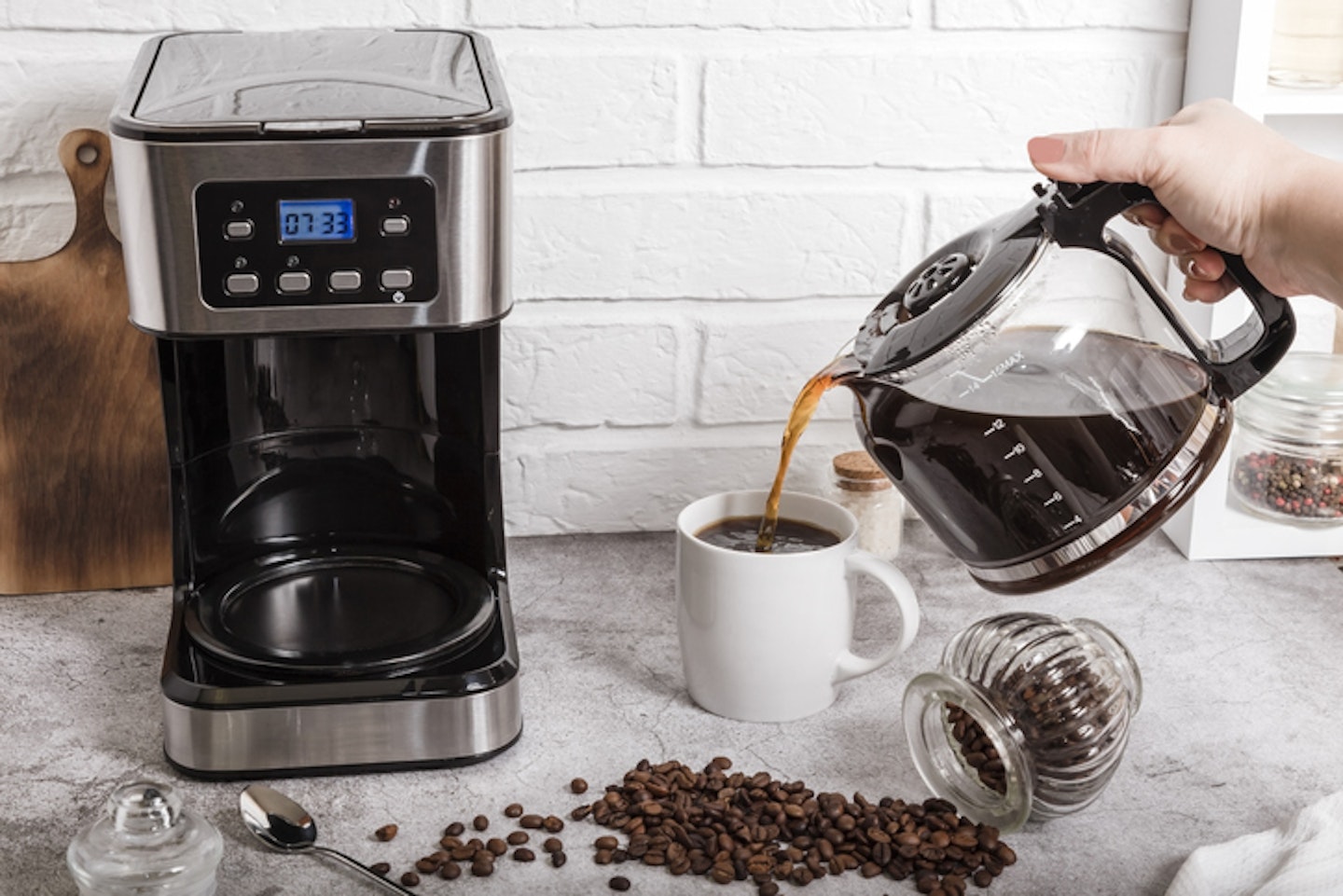
What is a filter coffee machine?
A filter coffee machine is ideal if you wake up in the morning and need no-frills black coffee to fuel your day. One of the oldest types of coffee machines available and the most affordable ranging in price from £15 anywhere up to £150. The most common type of drip machine brews the coffee in one large pot from your choice of roast. Depending on how much you spend on the filter coffee machine, features can include timer-controlled brewing, variable strength settings, auto switch-off, a warming plate, a fixed or removable water tank, as well as smartphone controls so you can set it all up from your bed.
Pros
Most affordable on a budget
Simple to use
Control over the strength of coffee
Not tied to a specific brand
Cons
Only makes no-frills black coffee
Coffee quality varies
Measurements take time to get right
Read our guide to the Best Filter Coffee Machine
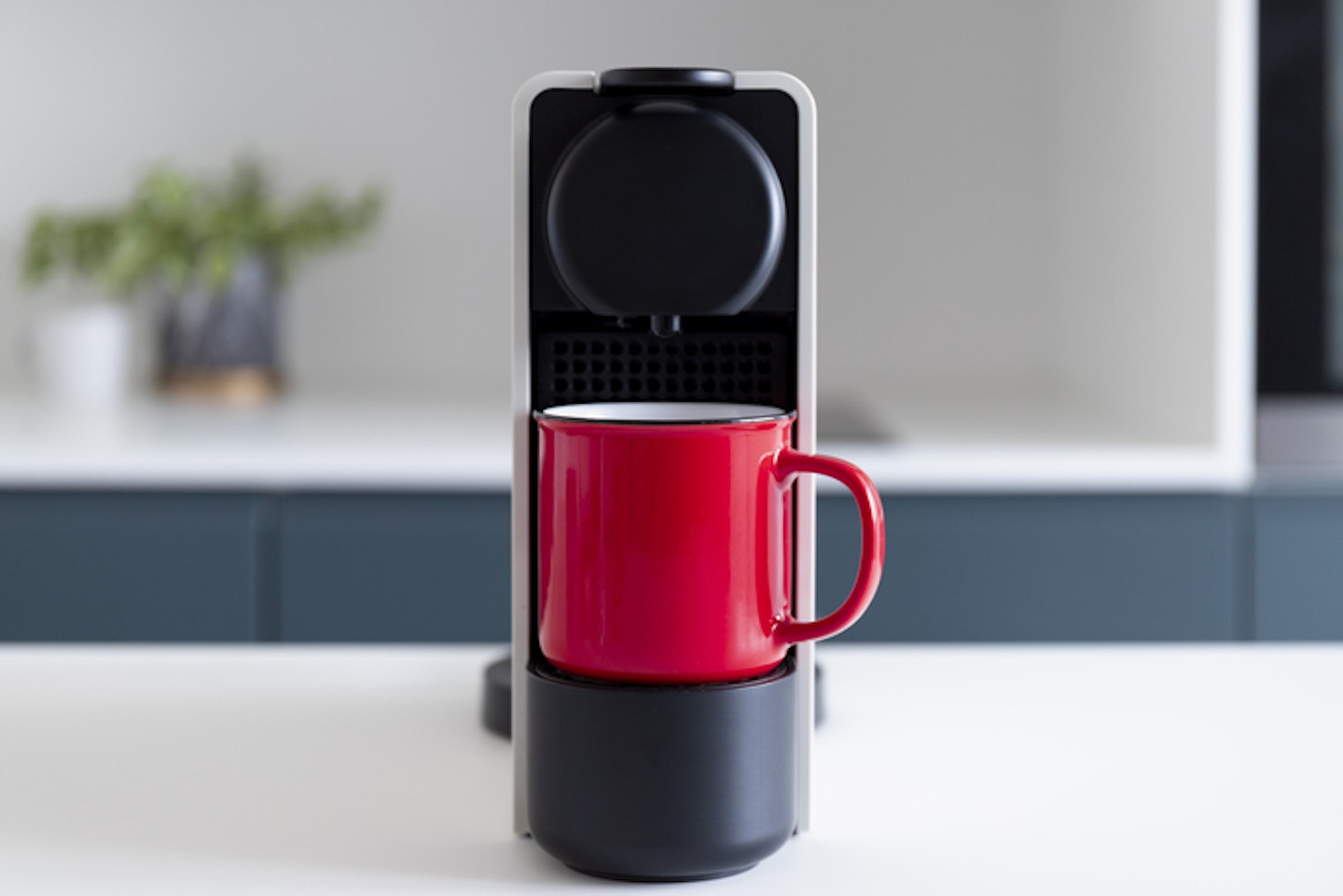
What is a coffee pod machine?
If you’re short on countertop space and short on time in the morning a coffee pod machine is going to suit your lifestyle very well. Brands like Nespresso, Tassimo or Dolce Gusto are the leaders when it comes to capsule or pod machines and can range from £30 to £200. They use pre-measured flavoured pods that are slotted in and brewed at the click of a button, using water from a small tank in a couple of minutes. It means you’ll always get the perfect cup, but the coffee is not as strong as a filter or bean-to-cup machine. They are not interchangeable between brands so you’re limited to capsules or pods that match your chosen coffee pod machine and can prove to be costly in the long run with coffee subscription offers.
Pros
Quick and easy to use
Compact, takes up little space
Large variety of coffee flavours
Affordable price for machine
Cons
Expensive to buy coffee pods/capsules
Limited to machine brand pods/capsules
Some pods are recyclable but not all
Weaker coffee than bean or filter
Read our guide to the Best Coffee Pod Machine
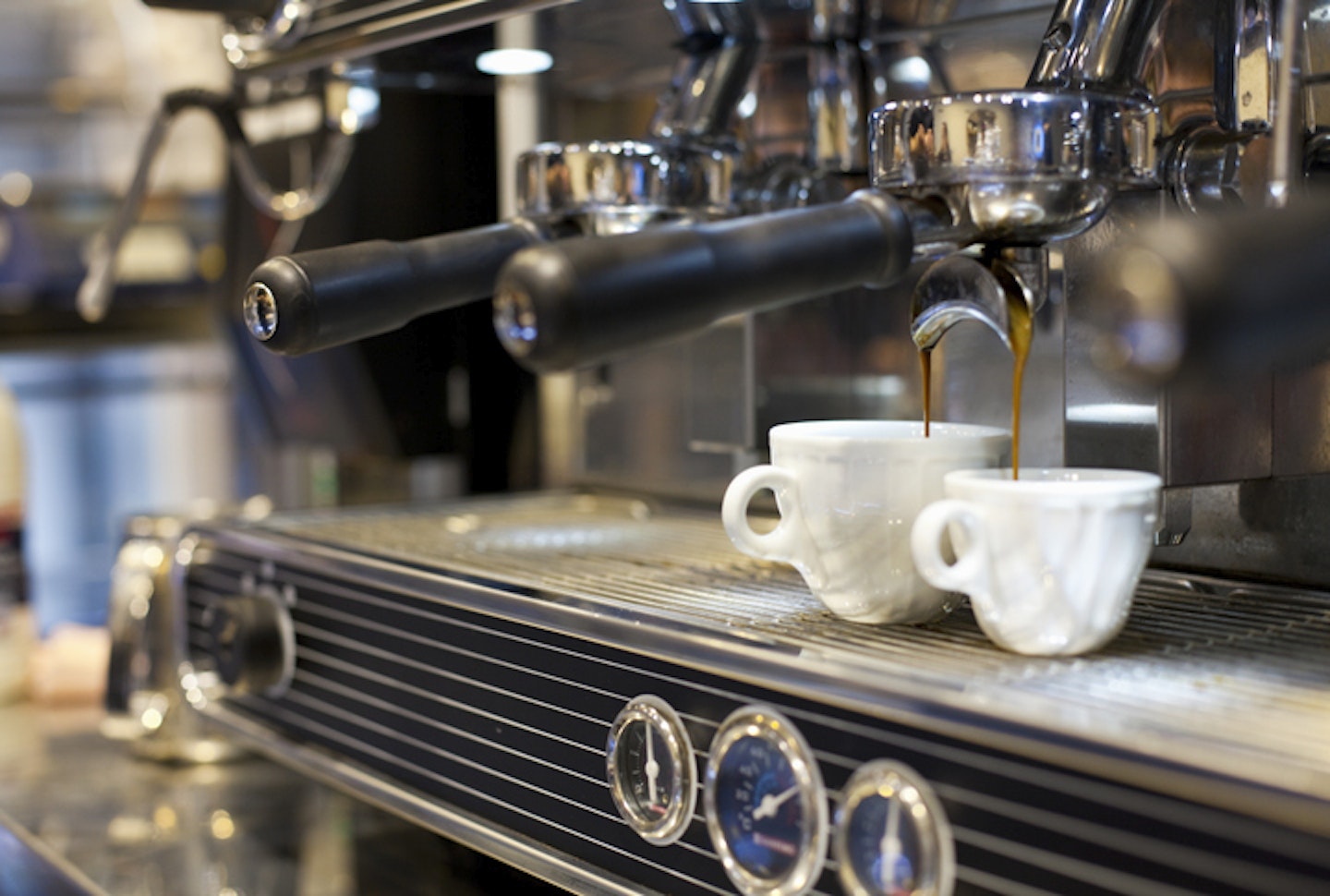
What is a bean-to-cup coffee machine?
If you’re a coffee aficionado and want that real barista experience at home, then a bean-to-cup coffee machine will deliver everything from a cappuccino to an americano as freshly as possible, on-demand. These machines will be the closest to a fresh coffee shop brew you can get, but also makes them the most expensive style of coffee machine to buy and brands like DeLonghi, Dualit and Sage can
cost anywhere between £200 to £2,000. They’re certainly an investment, but if you love coffee, they’re an essential purchase. A bean-to-cup machine isn’t the smallest appliance either, so you’ll also need to make sure you have space for it on your countertop.
Pros
Brews the freshest coffee
Barista style experience
All-in-one coffee maker
Cheaper overall than a pod machine
Cons
Initial expense is high
Takes up a lot of space
Needs regular maintenance
Read our guide to the Best Bean-To-Cup Coffee Machine
How to use a coffee machine
Filter coffee machine
A filter coffee machine uses ground coffee that you can buy pre-ground in bags of grind beans yourself for an extra fresh coffee taste. Always follow the manufacturer's instructions depending on the machine you have, but the basic process entails placing a filter into the filter basket or if your machine already has a mesh filter this should be cleaned in between uses. Then add the ground coffee blend of your choice (approx 10g of ground coffee per 180ml of water) along with the correct amount of water into the reservoir.
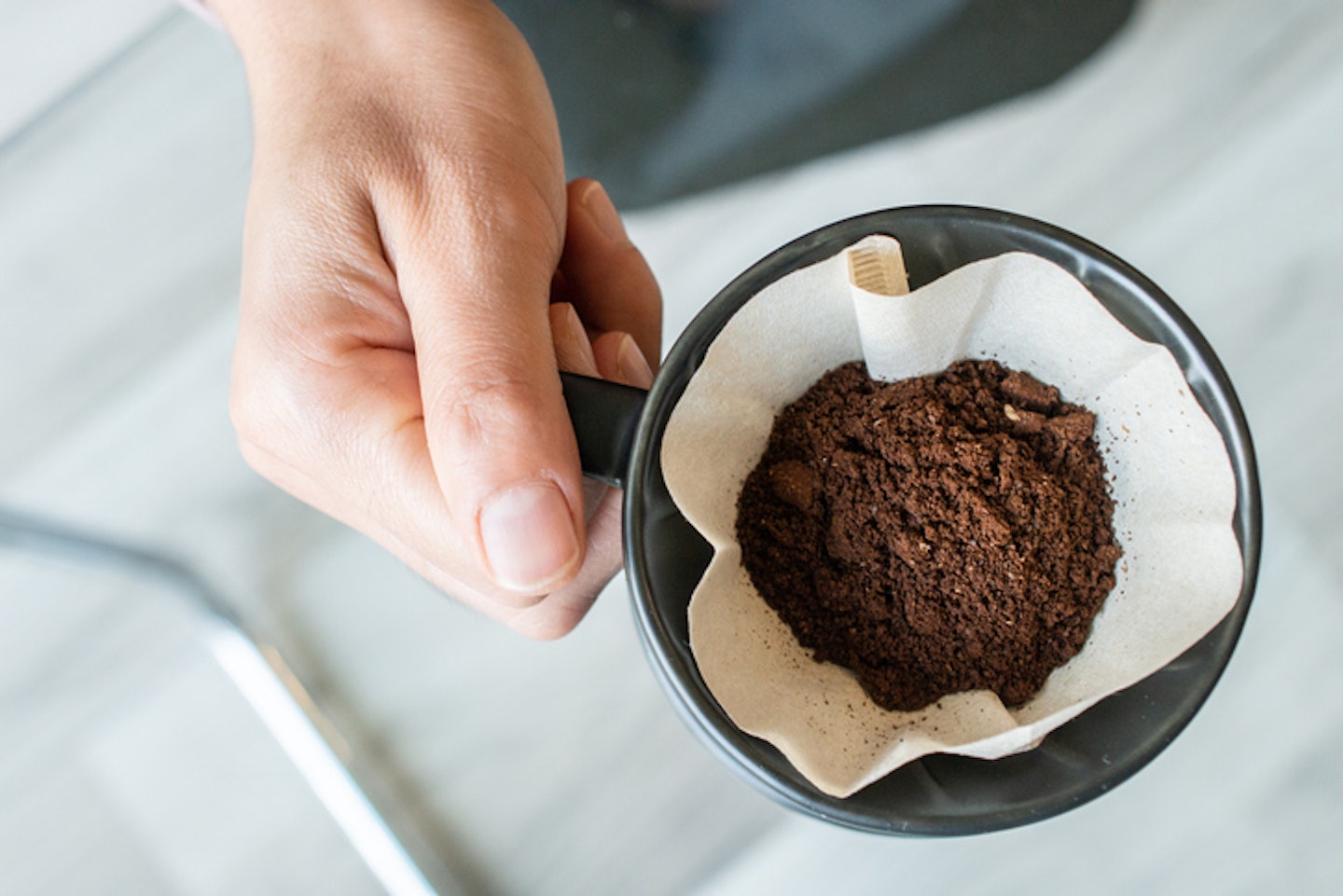
Depending on your coffee machine you will need to press a button to start the brewing process and wait for it to finish brewing before you pour it into a cup. Always dispose of used coffee granules as reusing them will make your coffee taste bitter. TOP TIP: Used coffee granules are great for composting.
Coffee pod machine
A coffee pod machine requires the least amount of preparation. To start you will need to fill your water tank with water, it doesn’t have to be measured as the machine will automatically use the correct amount, but it is recommended not to overfill. Place a cup underneath the spout of the coffee machine.

Check your manufacturer instructions after purchase to make sure you have bought compatible coffee capsules or pods. Choose your preferred speciality coffee pod and put it in the correct slot. Most coffee pod machine brands have different strengths that can make an espresso or latte coffee, so press the button that corresponds. Wait for the coffee to finish pouring and if you are adding milk from a separate frother make sure to add at the end. Empty your coffee pod and recycle it if possible.
Bean-to-cup machine
After thoroughly reading the manufacturer's instructions to complete the set-up of your bean-to-cup machine, you’ll need to select your coffee bean roast strength and flavour. If your coffee machine has an in-built grinder, then you will need to pour the number of beans recommended for how many cups of coffee you require into the grind basket.
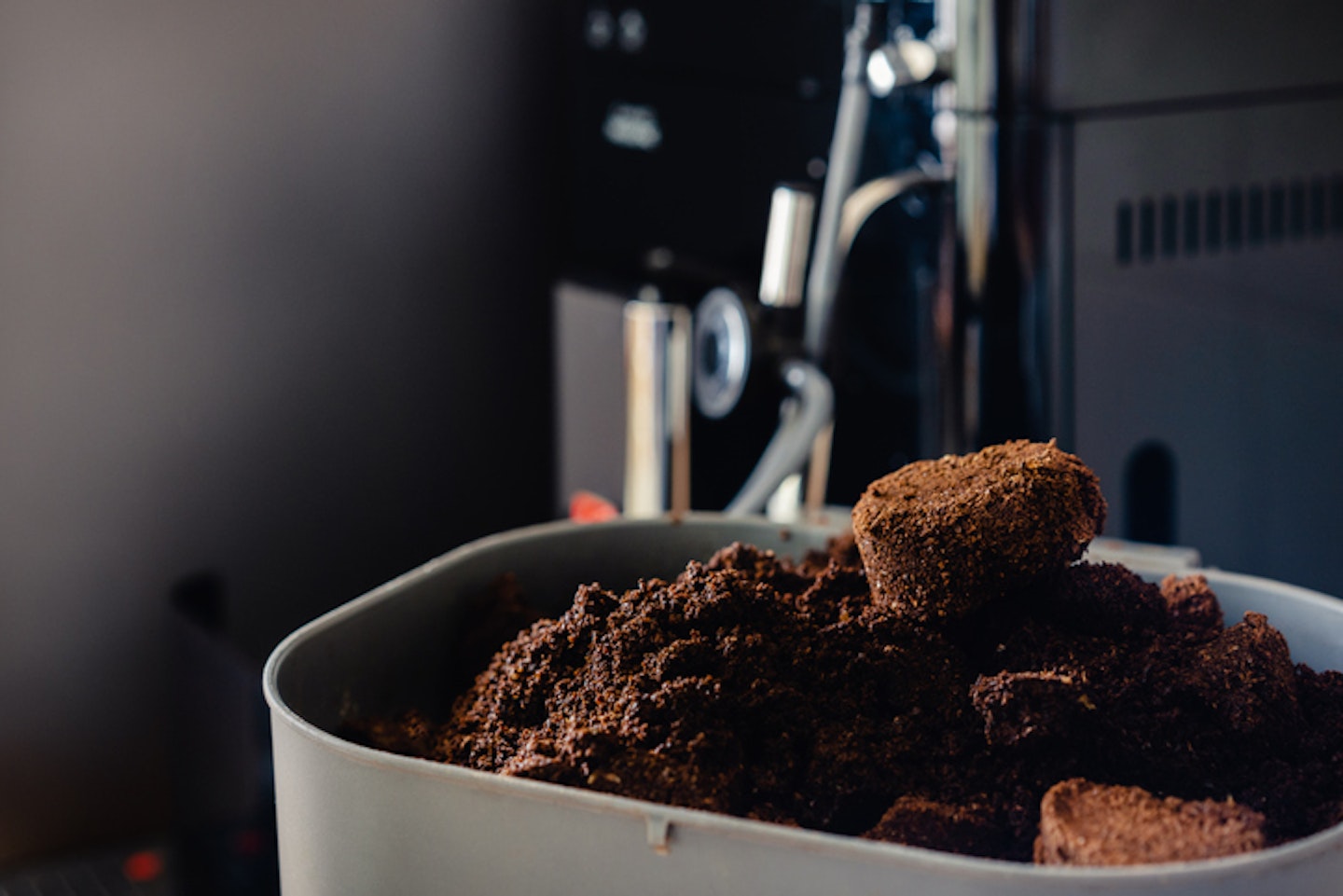
Fill your water jug with the correct amount of liquid and then pour this into the water tank or reservoir. Don’t overfill your tank and always put in at least 150ml of water, otherwise, you could damage your machine. Select your preferred coffee drink from the menu screen and allow your machine to get to work brewing your coffee.
Depending on the model of your bean-to-cup coffee machine you may need to prepare the milk separately if you’ve opted for a milk-based drink, or it will be automated. After your drink has been prepared, make sure to discard your used ground coffee and clean the relevant parts of your machine. If it has a quick-clean feature, select this or set aside time to tend to each part to clean it thoroughly afterwards.
How to descale a coffee machine
Consult your manufacturer’s instructions when it comes to descaling your coffee machine and follow the guide on how to maintain your appliance thoroughly and efficiently. Many coffee machines now include warning lights and alerts that will tell you of any problems or when your machine needs descaling.
A bean-to-cup coffee machine needs regular maintenance to prevent any blockages in the appliance’s pipe system and to stop the build-up of limescale that can reduce water flow and cause leaking. For most machines, you fill the water tank with a descaling solution mixed with water and select the function from the machine’s menu to complete the deep clean.
A coffee pod machine is the easiest to keep on top of and brands like Nespresso offer the option to purchase a descaling solution alongside your subscription, when you receive it, you need to place it in your machine’s water tank and flush it through.
A filter coffee machine is also relatively easy to descale, once you’ve emptied the decanter and removed the coffee beans, fill the reservoir with vinegar and water solution (1:2) or a suitable descaling solution. Let a cycle run and then discard the solution before running through just water to rinse out any leftover solution.
